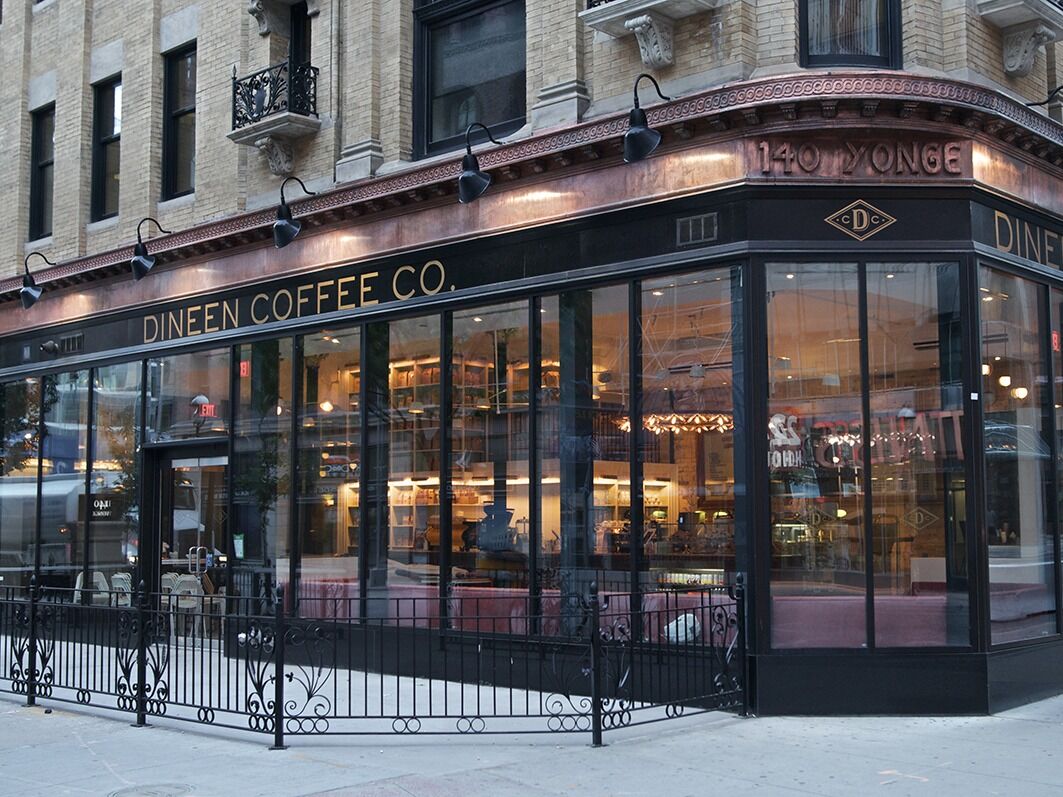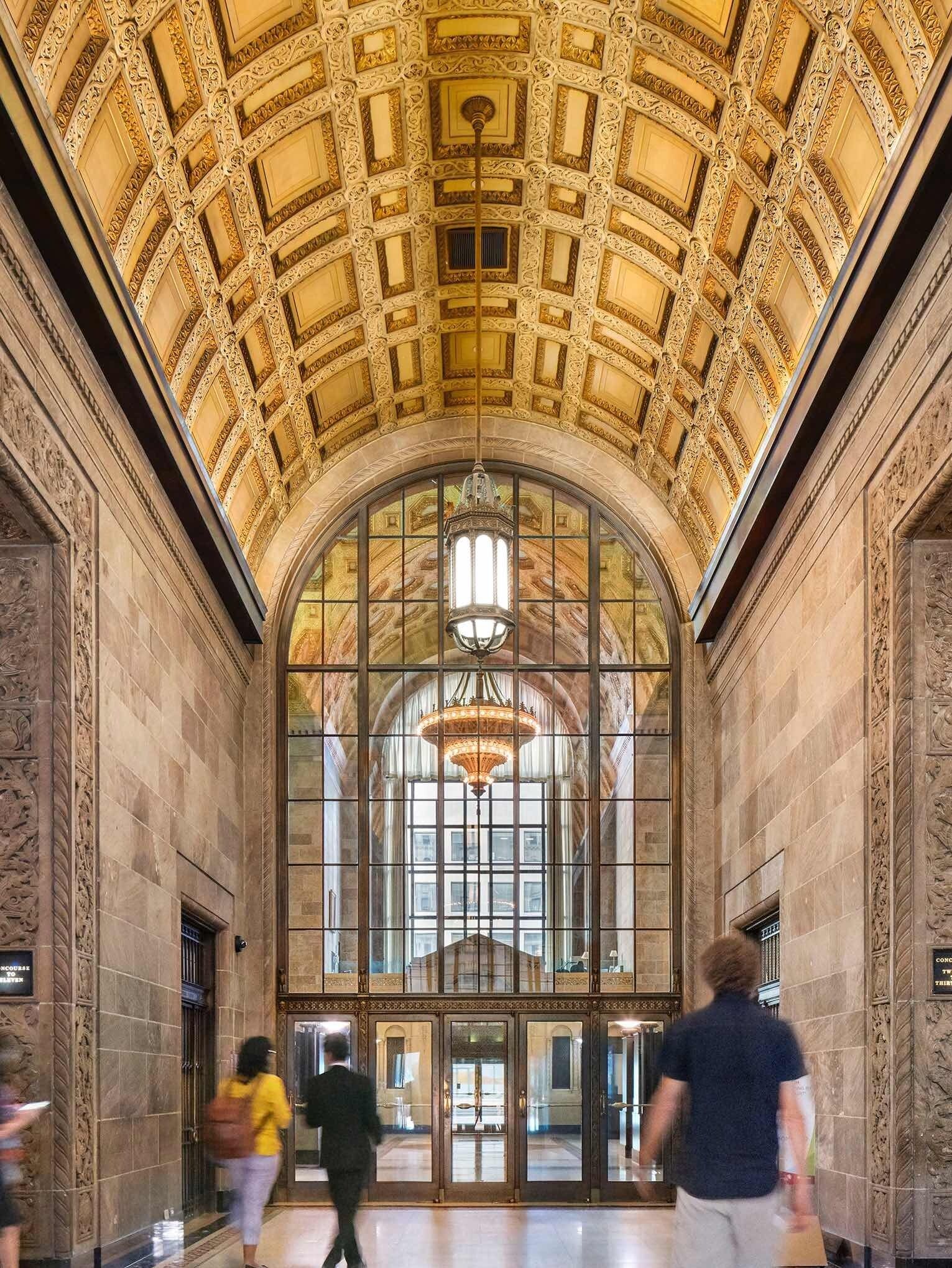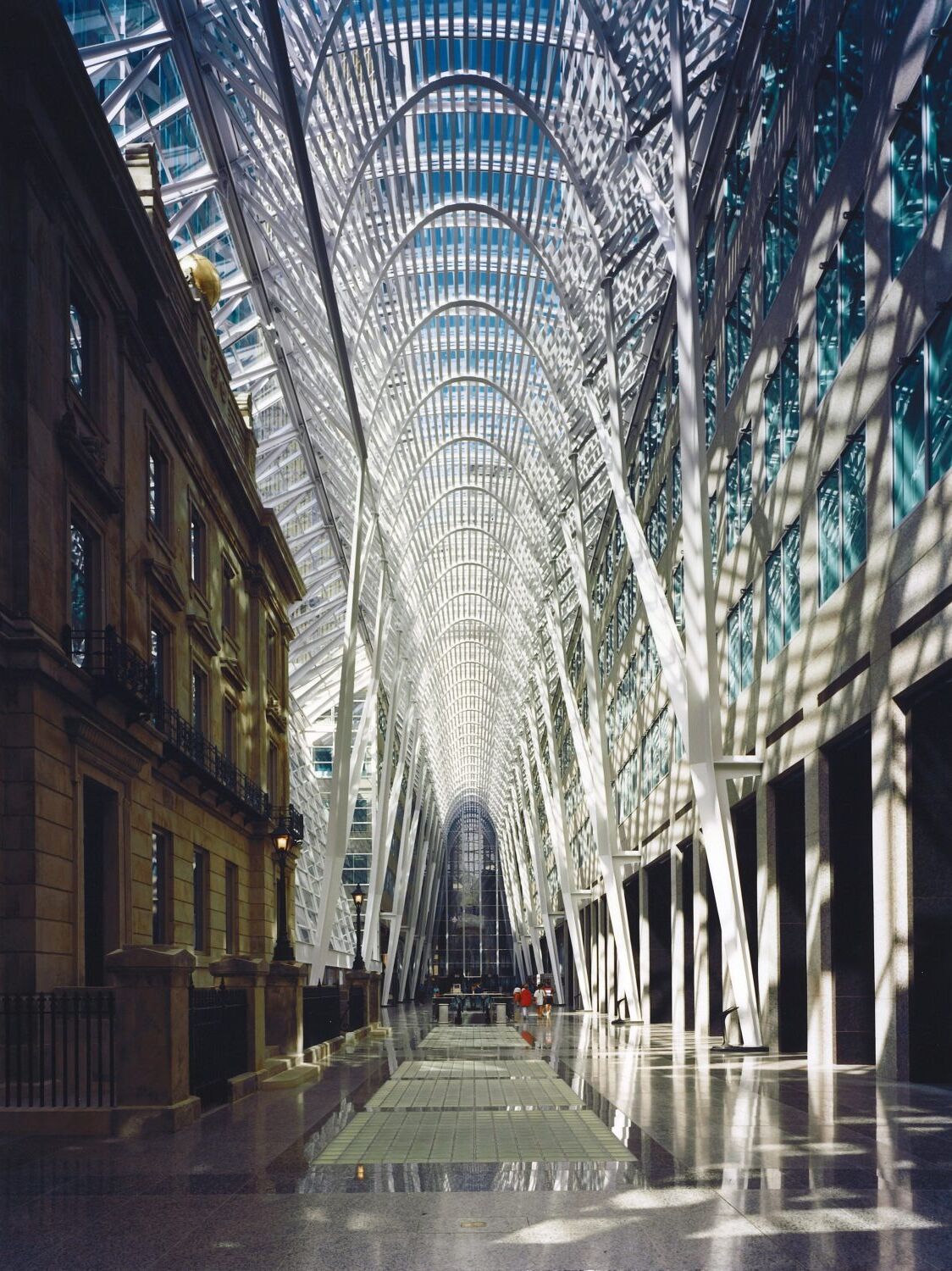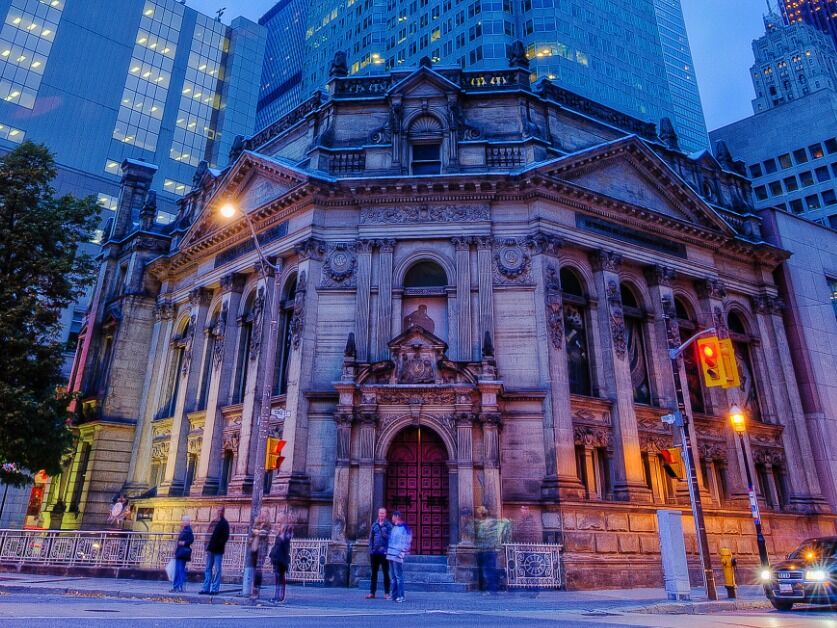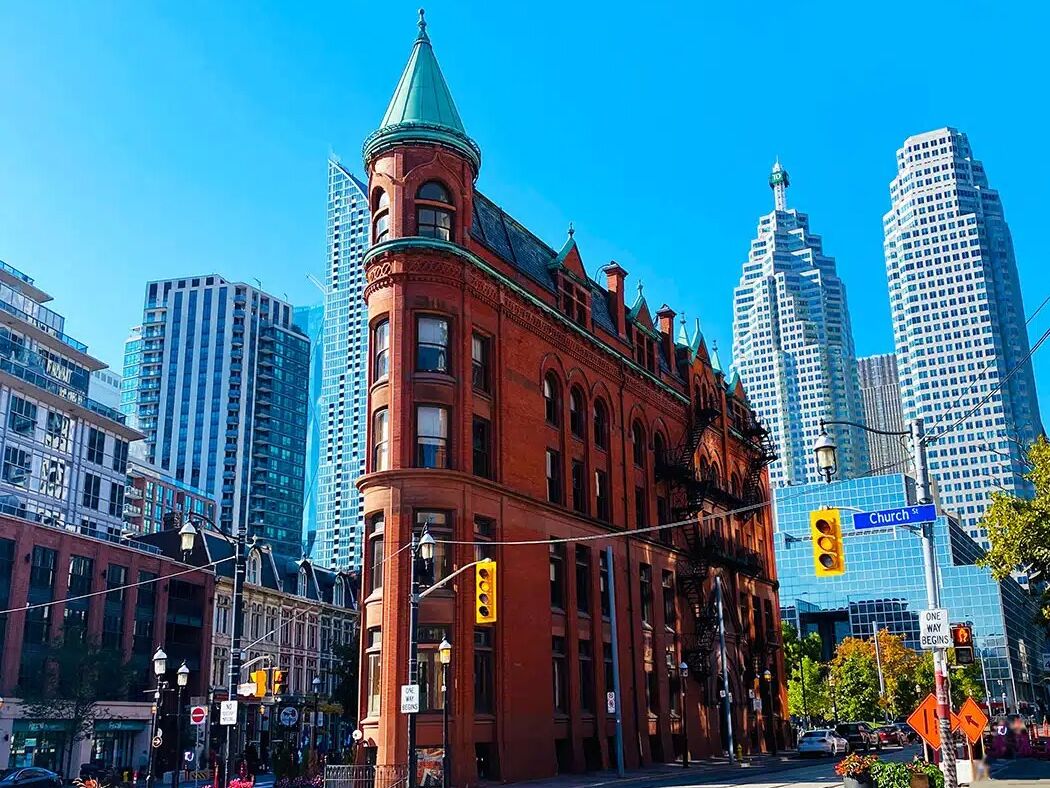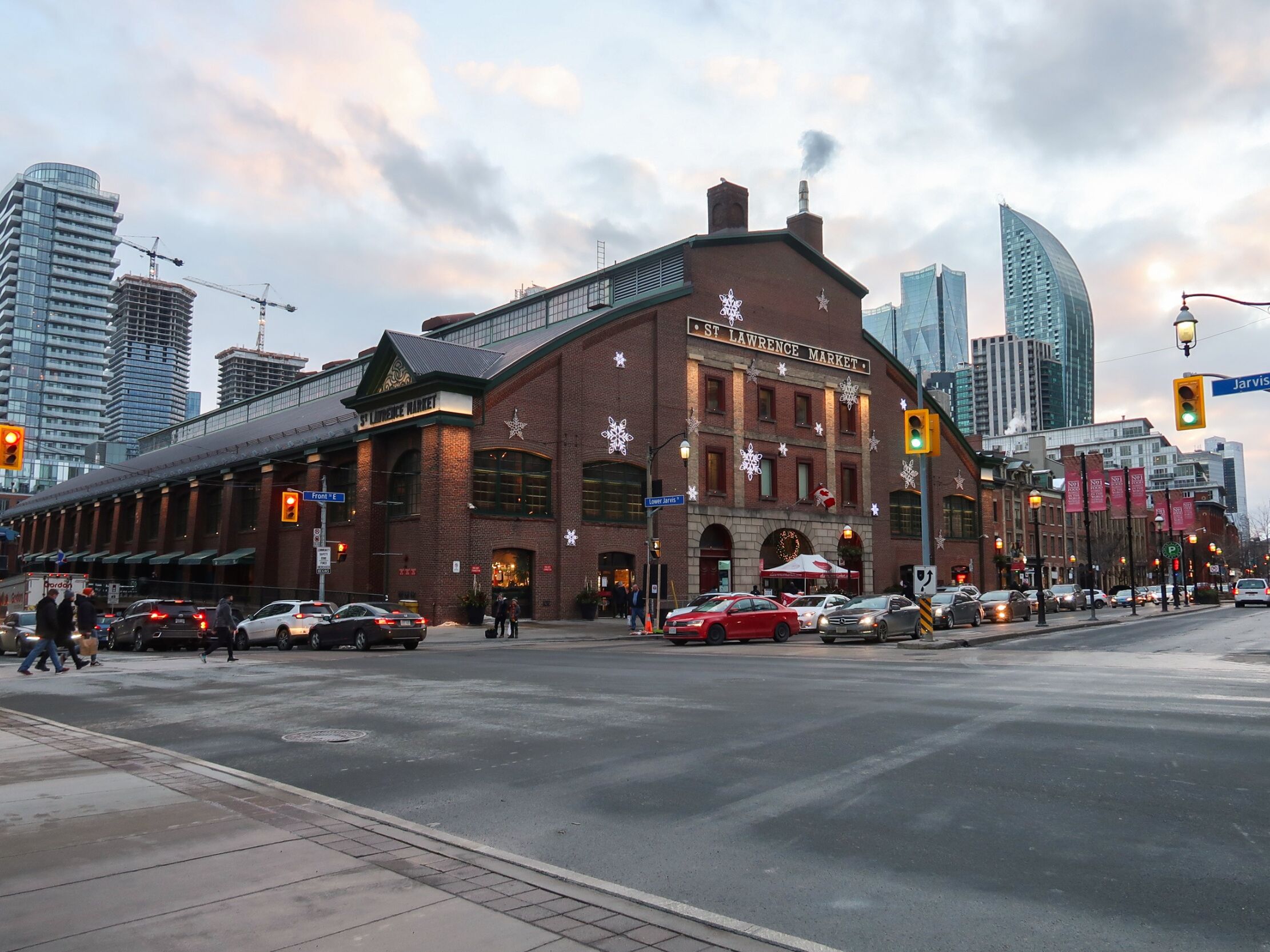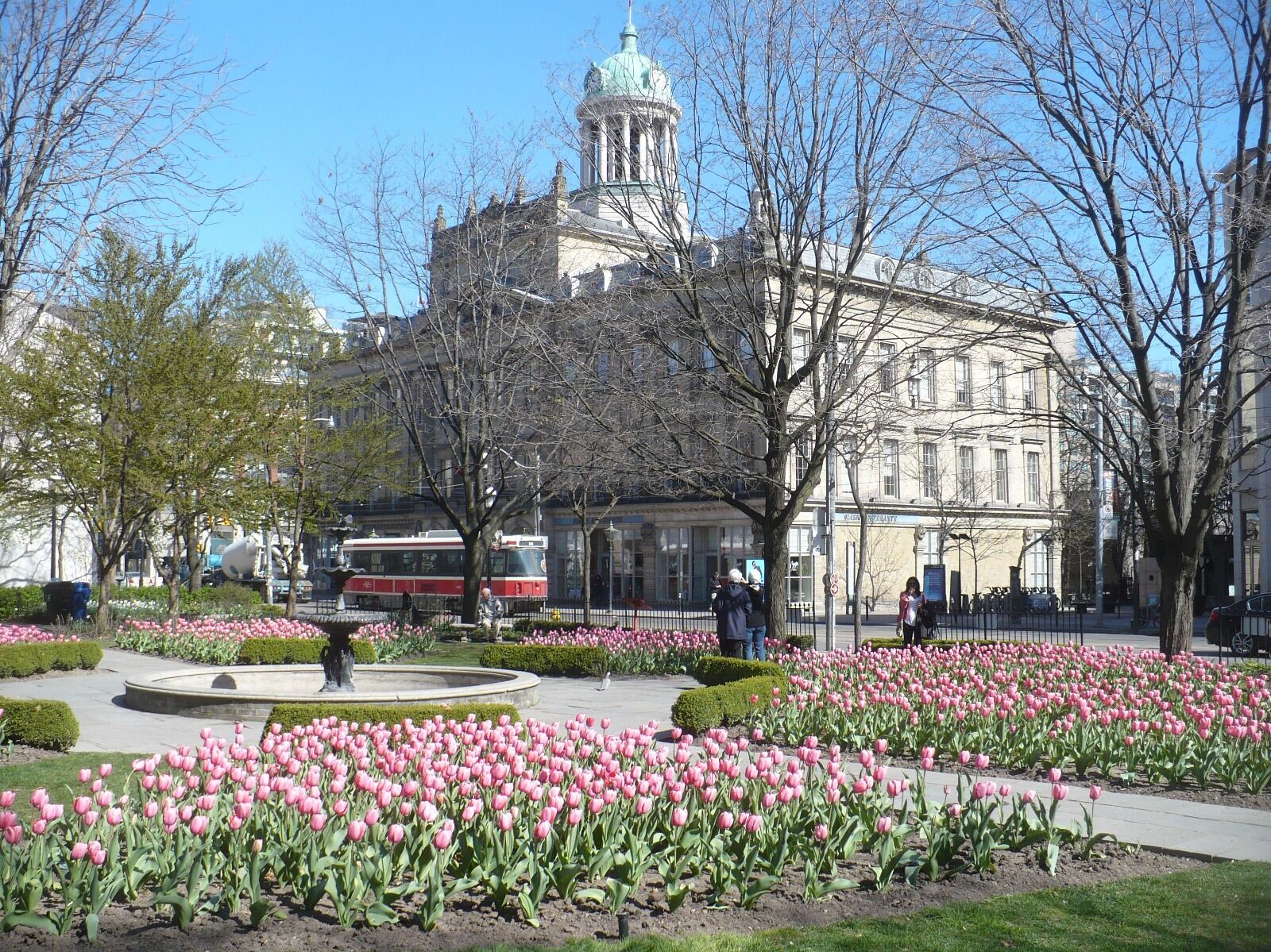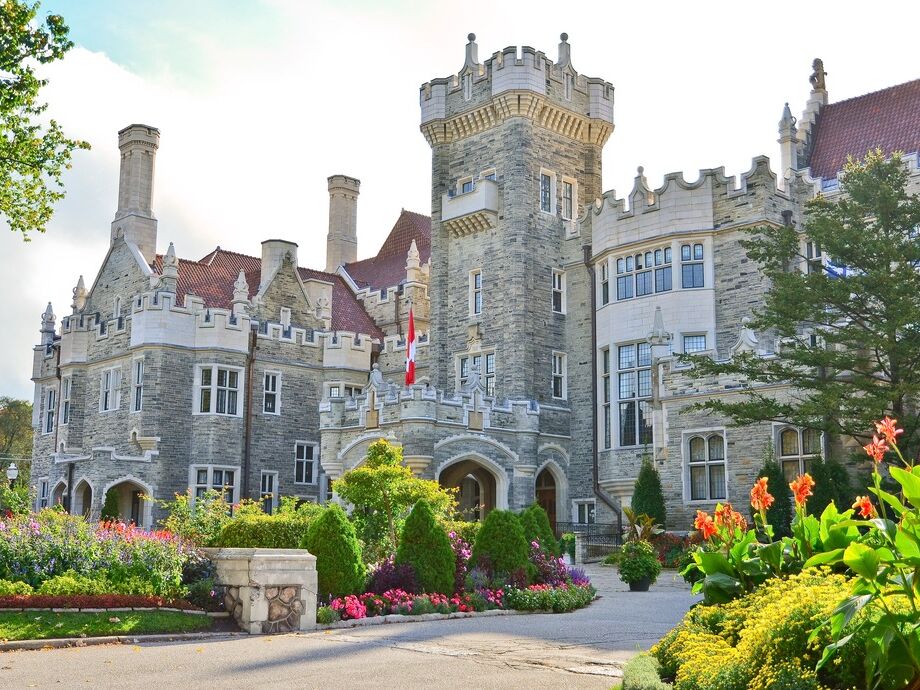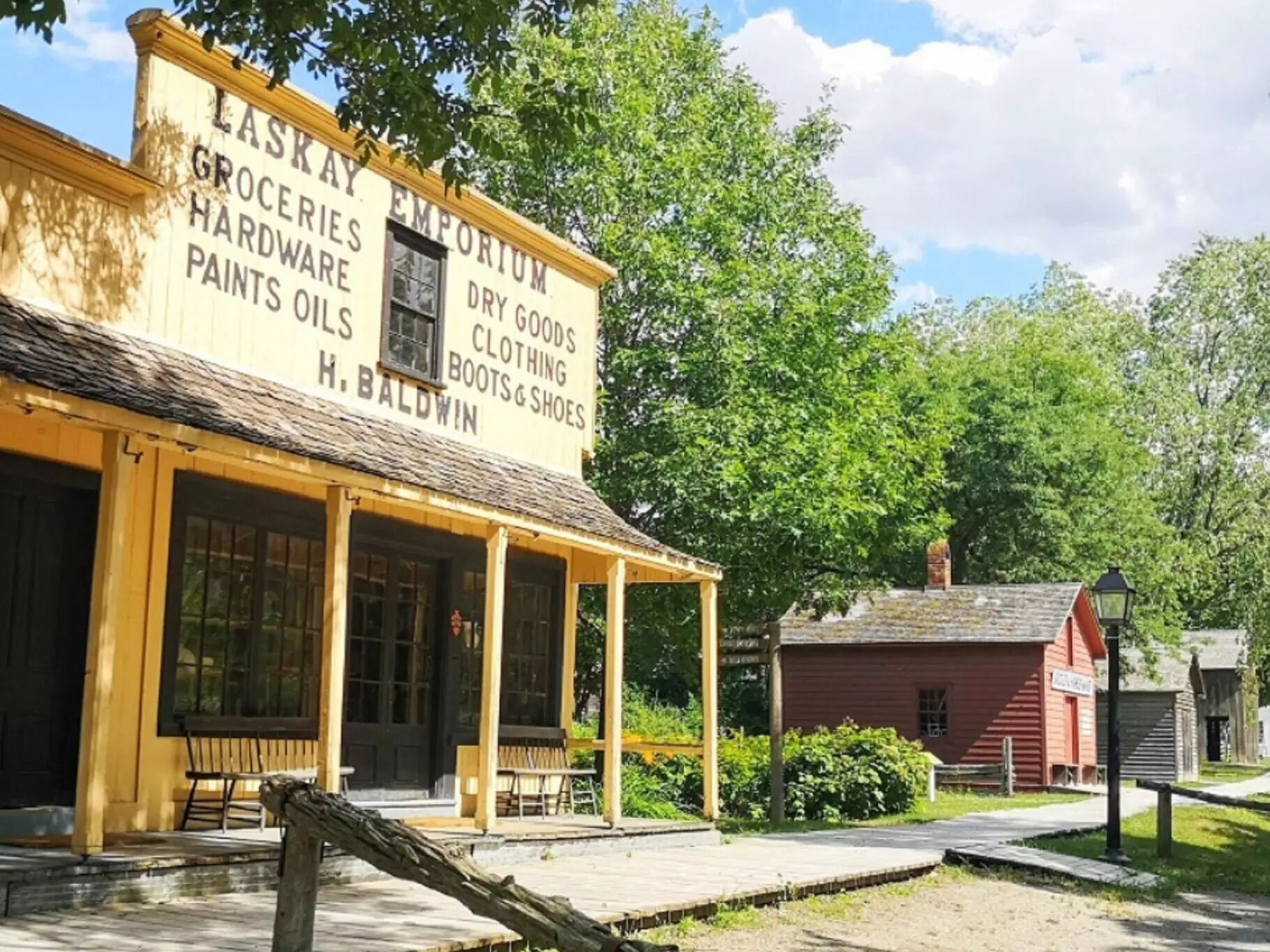
Adam & Tammy
Adam & Tammy
Dineen Coffee Co.
This location was their first to open and is in the Dineen building, one of the oldest structures in Toronto. Built in 1897 and now a heritage property, it once housed W. and F. Dineen Co., makers of fur clothing.
Even if you’re all coffee-d out, step inside the café and check out the pillars, the exposed brick walls, iron and brass finishing, and the other original features of the building. The café serves Parisienne-style coffee (instead of the typical Italian style you might be used to drinking) and fresh baked goods that are brought in every morning.
CAN YOU FIND? Take a look at the floors at Dineen Coffee. What letters can be found?
Commerce Court North
Commerce Court is accessible on weekdays (or when the building is open). Head down Melinda Street to the back of the North Tower building. Head through the south or west doors which will take you to the building’s original lobby. This is where you’ll find a beautiful gold-coffered ceiling in a classic Art Deco style.
FUN FACT: The 34-storey North Tower was the tallest building in the British Empire from 1930 - 1962.
CAN YOU FIND? If you’re able to find the hidden gold ceiling, try to find the message that is dedicated to those who lost their lives in the Great War
Brookfield Place
A popular Instagram backdrop, Brookfield Place (181 Bay St), is a fusion of new and old Toronto architecture. The Allen Lambert Galleria is a breathtaking sight to behold with its high glass ceilings made to look like a crystal palace, combined with the facades of old buildings.
CAN YOU FIND? In the middle of Brookfield Place is a famous heritage building that was disassembled stone by stone and reconstructed inside. What year was the heritage building originally built?
Hockey Hall of Fame
For all you hockey fans, on the corner of Yonge and Front St. is the famous Hockey Hall of Fame (30 Yonge St). Even if hockey isn’t your thing, but you’re a confirmed history buff, the HHOF houses decades of trophies and memorabilia.
CAN YOU FIND? At the front of the Hockey Hall of Fame is a silver dollar that commemorates the 25th anniversary of the 1972 Canada / U.S.S.R. Hockey series. What year is the coin?
A SPOOKY STORY:
For more than 60 years, a young girl named Dorothy has haunted the Hockey Hall of Fame. Now, it isn’t her love of Canada’s past time that has kept her attached to the building - this was the location of where she died back in 1953. Before it was a famous museum, the Hockey Hall of Fame was the Bank of Montreal. After her death, the Toronto Telegram ran a brief article which reported that this young bank teller “may have been despondent over a love affair".
Rumours have emerged over the years about the cause of her suicide. One accused her of stealing money, another said she was having an affair with another teller or the married bank manager, who lived in the apartment upstairs. A psychic believed Dorothy was actually murdered after she uncovered a scheme that involved the bank manager, the chief of police and a leading judge who were embezzling money.
Since her death there have been countless reports of lights flicking on and off, windows opening, moaning and eerie sounds and even people feeling like they were being watched...when in a room all alone. A previous employee of the Hall, Rob Hynes, remembers the one day he was there for a special event. When getting coffee in the kitchen behind an empty conference room, he felt a strong urge that someone was watching him and that it enticed him into the dark conference room. Once he was in there, one of the chairs was turning as if a breeze were inside.. which eventually moved right through him. Rob has said that he is a skeptic when it comes to ghosts, but he ran out of there as fast as he could. As you walk past the historic Hockey Hall of Fame see if you can feel any paranormal presence.... if you dare.
Source: The Toronto Star, Hockey Hall of Fame Ghost Revealed at Last
Gooderham Building
Keep walking east to check out the Gooderham Building (49 Wellington St. E). a.k.a. Toronto’s Flatiron building. If you turn around you’ll be treated to one of Toronto’s most iconic views.
St. Lawrence Market
Farmer's Market: Saturday, 5 am - 3 pm
South Market: Tuesday - Sunday, 10 am - 5 pm
Closed Mondays
Dating all the way back to 1803, St. Lawrence Market is a significant Toronto landmark. Originally an open-air farmers market, it was established because the people of York needed a scheduled time and place to sell their goods. Over time, it became a social hub for the city and the site for all Saturday morning sales and auctions; even public punishments were carried out here!
In 1845, the South building was constructed as Toronto City Hall. Soon after, the railway came to the city with tracks laid along The Esplanade to bring trains right into a station close by. Over the years the market has grown to become, according to National Geographic (2012), “one of the world’s best food markets".
St. James Park
If the sun is shining or you’re feeling brave in the colder months, take all of your goodies from the market over to St. James Park. Located next to the almost 170 year old St James Anglican Cathedral, there are plenty of spots for a picnic and for you to relax.
The current cathedral is the fourth to have stood on this site, with the first being a simple-wooden structure built in 1807. In the War of 1812 many wounded soldiers from nearby Niagara forts were brought to York for treatment. If you can believe it with all the skyscrapers now, the original church was the biggest building in town, so it served as a hospital.
It may be hard to imagine now as you stroll through the park, but the whole green space used to have hotels, bakeries, homes, other commercial shops and two small lane ways. The church you see today was rebuilt in 1853 after the Great Fire and all buildings on the park grounds were razed in stages through the 1960s.
The Distillery Historic District
The Distillery District was opened in 1831 as a grain grinding mill by brothers-inlaw, James Worts and William Gooderham (Sound familiar?). In 1837, Gooderham added a whiskey distillery — the flat-iron building you may have passed earlier served as their office. In its prime, Gooderham and Worts became one of the largest distilleries in the British Empire, but WWI and prohibition (when alcohol was made illegal in the 1920s) brought their business to a stop and they were forced to sell. Over the years, the buildings became quite run down.
In the 1990s, the area was rediscovered and repurposed to become the world’s second most popular filming location — it was second only to Hollywood! Hundred of big names strolled the streets you are about to explore. The area was prohibition-era Chicago for the Broadway musical turned movie phenomenon, and small town PEI for the Canadian favourite, Road to Avonlea... just to name a few!
Today’s Distillery District — with its retail space — draws visitors from all over the world.
Ripley's Aquarium of Canada
Explore the Waters of the World at Ripley's Aquarium of Canada. Located in the heart of downtown Toronto at the base of the CN Tower, the aquarium is Toronto's must-see attraction for tourists and locals of all ages.
Immerse yourself in a world of 20,000 aquatic animals and discover your own underwater adventure. The Aquarium features North America’s longest underwater viewing tunnel with more than 5.7 million litres of water and over 100 interactive opportunities.
Get up close and personal with several touch exhibits featuring horseshoe crabs, sharks, scarlet cleaner shrimp, and stingrays as well as daily dive shows every 2 hours.
Scarborough Bluffs
The Scarborough Bluffs, commonly called “the Bluffs,” rises 91 metres above and stretches approximately 15 kilometres along the Lake Ontario shoreline. These stunning white cliffs are a testament to the end of the Great Ice Age, making them a remarkable geological feature. The Bluffs is a distinctive and celebrated natural landmark in North America boasting plenty of attractions and activities for everyone to enjoy.
- Bluffer’s Park & Beach is the only spot in the Bluffs with a swimming beach. You can also enjoy picnicking, lookouts, sunbathing and boating
- Cudia Park is ideal for nature lovers with its quieter escape of lush vegetation and wildlife sightings on peaceful hiking trails.
- Cathedral Bluffs Park presents breathtaking views of eroded sandstone bluffs and Lake Ontario, and it happens to be situated atop one of the highest points within the Bluffs
- East Point Park is a haven for bird watchers and monarch butterfly admirers, a mix of wetlands, meadows, and trails.
- Guild Park and Gardens features vistas of Lake Ontario and pristine gardens and trails adorned by over 70 statues, arches, and other treasures salvaged from buildings dating back to the 1800s and 1900s
Casa Loma
Casa Loma (improper Spanish for "Hill House") is a Gothic Revival castle-style mansion and garden in midtown Toronto, that is now a historic house museum and landmark.
It was constructed from 1911 to 1914 as a residence for financier Sir Henry Pellatt. The architect was E. J. Lennox, who designed several other city landmarks. Casa Loma sits at an elevation of 140 metres (460 ft) above sea level, 66 metres (217 ft) above Lake Ontario.
Due to its unique architectural character in Toronto, Casa Loma has been a popular filming location for movies and television.
Black Creek Pioneer Village
Immerse yourself in the 1860s and explore an authentically re-created country village of the Toronto region.
At Black Creek Pioneer Village, visitors discover 40 historic buildings, 70 rare and heritage breed animals, 10 gardens growing flowers and plants from heirloom seeds, and exciting programs that engage people of all ages.
You will get to meet costumed educators who demonstrate and involve visitors with trades and crafts common in 1860s Ontario, tap their toes to music of the era, and have fun engaging in hands-on activities throughout the village!
